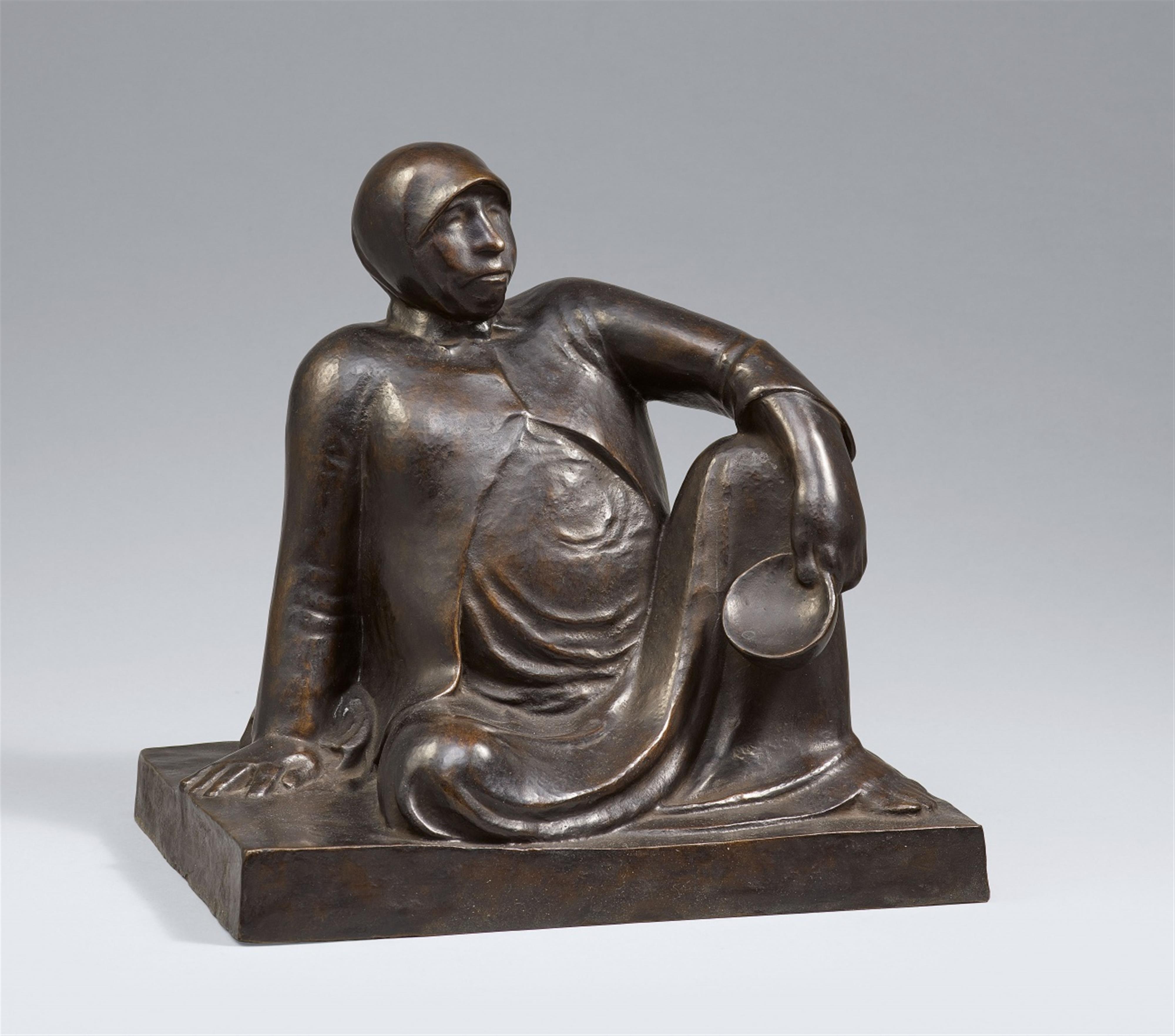Ernst Barlach
Russische Bettlerin mit Schale
1906
Bronze 28.5 x 29.7 x 22.5 Signed 'E. Barlach', numbered "11/12" and with foundry mark "H. NOACK BERLIN" on rear side of plinth. Exemplar 11/12 from a posthumous edition cast since 1979. - Dark brown patina, partially slightly lightened. - In fine condition.
The five bronze sculptures by Ernst Barlach which we are able to offer this auction season provide a sense of the artistic development that can be identified in his sculptural oeuvre. The “Russische Bettlerin mit Schale”, created in 1906, and the “Russische Bettlerin II” - whose design follows the small version from 1907, although it was first realised at this size in 1932 - illustrate the thematic and artistic impulses that Barlach gleaned from the several weeks he spent travelling in Russia in 1906. After his earliest work, which was influenced by Jugendstil, the artist now found his way to simplified, cohesive forms. He slightly stylised the long robes covering the bodies of Russia's rural populace and transformed them into flowing, ornamental lines. While the representational details and narrative aspect still dominate in the “Bettlerin mit Schale”, which was created earlier, he has already transposed the stooped-over figure of the second “Bettlerin” into a thoroughly abstracted form which only vaguely suggests the human body beneath the lengths of fabric.
Drapery also remains a defining element in Barlach's later sculptures, where he constructs the figure through the form of the drapery. It establishes a unifying covering for the body and, through this reduction of form, it ensures a focus on gesture and pose; emotional agitation can also be visualised through it.
From 1910 Barlach's main body of work was strongly influenced by the Gothic sculptures in the churches of his native Northern Germany. He translates the formal principles he saw there into his own expressive idiom. In doing so, he made use of specific compositions from medieval works of sacred art, but without necessarily adopting their iconographic content. He created sculptures which possess a timeless expressive power and visualise fundamental statements of human existence.
The elongated, statuesque figures of Christ and Thomas in “Wiedersehen”, from 1926, are interlocked in their physically distant but nonetheless heartfelt embrace; the strongly differentiated poses of their bodies provide an eloquent statement about the circumstances of their encounter. The “Zweifler” of 1930 presents himself in a block-like form with an earthy gravity: the drapery condenses his kneeling body into a unified entity, and his inner strife reveals itself in the angle of the head and the wringing of the hands. The figure of the “Buchleser” from 1936 - also entitled “Lesender Mann im Wind” - likewise presents a self-contained, unified entity; pose and gaze are entirely oriented towards his reading. The slightly billowed drapery of his lap and the dishevelled hair can be interpreted as the effects of the wind, but also as subtle signs of inner agitation.
Catalogue Raisonné
Laur 105; Schult I, 61

